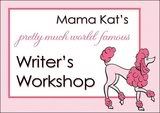By Peg Baron
I'm one of those people who can't step inside a bookstore without taking a big appreciative whiff of that ever-present book smell with a little coffee scent thrown in. I love to read and I want my children to be fluent readers and lovers of books, so I have come up with 7 creative ideas to help them get to that magical place.
1. Reading Wall - Cut out 4" by 4" squares of colored construction paper. When your children have each read a short book or a chapter from a longer book, depending on their age, they get to fill out one of the squares and tape it on the wall. This should be a big, bare wall in your home that can hold lots of these colorful squares. It looks pretty cool when it's done, and the kids have a wonderful feeling of accomplishment. If that's not satisfaction enough, then you can offer a prize when the wall is filled; perhaps a boxed set of their favorite book series or membership to a book of the month club for each.
2. Read In - Some evenings are meant for a "read in." The kids get into their pjs, grab their favorite book, and jump onto the biggest bed. This works best when everyone is involved, including Mom and/or Dad. Some kids like to hang off the end of the bed and read upside down and some like to read using your stomach as a pillow. By the way, the floor is quicksand.
3. Changing Places - Everyone finds a place to read and they can't be in the same spot as someone else. After about 10-15 minutes, you yell "change!" and the kids find a different place to read. Kids love to find the most unusual places that become their favorite places to read, even when not playing this game. I've seen kids in the bathtub with a sleeping bag, in a closet with a big flashlight, and curled up on the dog's bed. One favorite spot is on a pillow behind the couch.
4. Quotes and Pictures - Ask your child to read a book of their choice and tell you at the end what their favorite sentence or quote was and why. Which picture was their favorite? If there were no pictures, ask them to describe a scene they pictured in their mind.
5. Library Twirl - Go to the library and head for a section in the juvenile area that they wouldn't normally go to, perhaps non-fiction. Twirl them around with their eyes closed and have them grab 10 books from different shelves. Then with eyes open, they can look through the books and take home the ones they find interesting.
6. Mystery Quote - Go to your children's bookshelves at home and pull out some books when they're not watching. Read one or two really great sentences from each book and have them guess which book they came from. This helps them to remember the books they've really enjoyed in the past and perhaps would like to read again. It also helps them appreciate a well-written phrase.
7. Book Review Blog - The kids can start a book review blog online. There are several sites where you can set up a free blog for them very easily. Of course, you want to set up restrictions about using a nickname for the sake of privacy and having you pre-approve all posts. Each book reviewed can follow a formula like: skill level, # of pages and # of chapters (some kids really care about that), quote the opening few lines, a 3 sentence summary of the book, what they liked about the book, and what they didn't. They can even give the book a star rating.
Some kids lean towards reading naturally, and others can use a fun nudge in the right direction. Perhaps with these ideas your kids may find reading interesting, inspiring, and magical. Who knows, maybe they'll even learn to love the smell of a good bookstore.
Peggy Baron reads with her kids in Colorado, and runs http://cookinkids.com, a website devoted to helping parents and kids have fun together in the kitchen. Peggy is the editor of the popular Cookin' Kids Newsletter, a bi-monthly newsletter with fun facts, recipes, jokes, games, cooking safety, and cooking terms wrapped around different themes.
Article Source: http://EzineArticles.com/?expert=Peg_Baron
http://EzineArticles.com/?Kids-and-Books---7-Ideas-For-Reading&id=740441










![[Image]](http://www.coolmomguide.com/wp-content/uploads/2008/09/08190813461.gif)
































